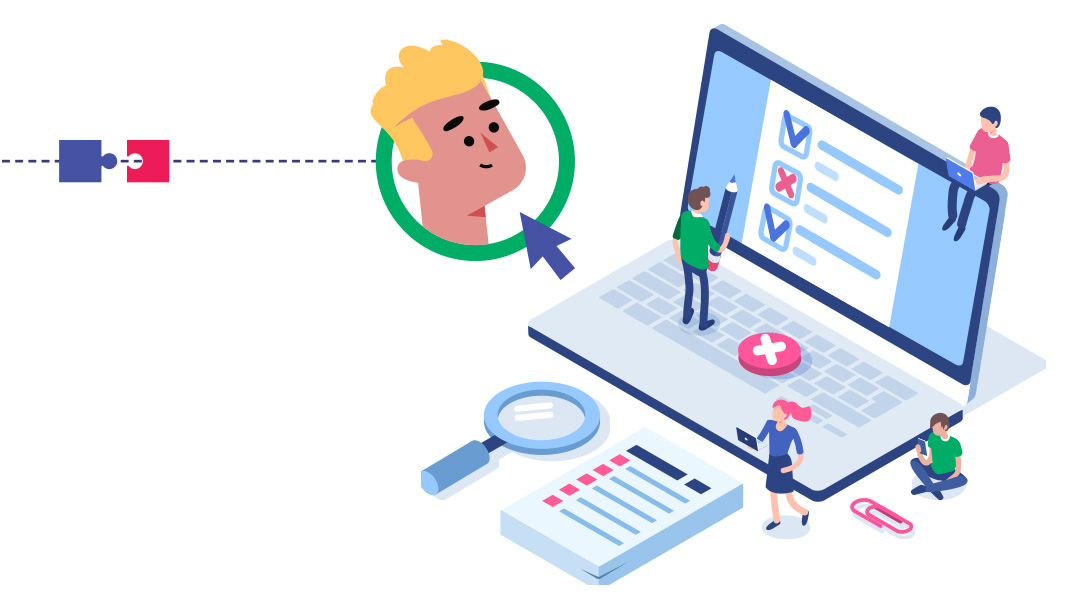Part 26: Scaling or Stalling?
| June 3, 2025Empower your business with smart software choices

A
vi runs operations for a growing logistics company. With 50 employees, major brand contracts, and a steady hum of pressure, on paper, they were thriving. In practice? The company was held together with duct tape, goodwill, and too many spreadsheets.
He reached out last month, exasperated.
“We’re trying to scale,” he said, “but I’m worried we’re just scaling the mess. Every part of the day feels like a chaotic marathon. My team’s juggling emails, spreadsheets, and calls just to stay afloat. We’re not working smart — we’re just surviving.”
I asked if they’d explored AI.
He paused.
“Not really. Some of the guys played around with ChatGPT, but it’s more of a toy than a tool. At least, the way we’ve been using it.”
He isn’t alone. That’s where many smart, capable teams are right now.
Step One: Start Small, Fix What’s Breaking
We hopped on Zoom, and Avi shared his screen. The spreadsheet opened like a crime scene.
“Here’s the dispatch summary,” he said. “It’s supposed to be automated… but really, someone’s just pulling numbers from five different tabs and hoping nothing got missed.”
Then he moved on to vendor quotes. “We get emails from ten suppliers, and someone has to copy-paste the price, lead time, and terms into this sheet.”
The client updates weren’t any better. “We stitch these together from Slack, texts, and a shared doc that nobody actually keeps up-to-date,” he finished ruefully.
None of it was broken enough to shut things down — but all of it was broken enough to wear people out.
“How much time is this all taking?” I asked.
Avi just laughed. The kind of tired laugh you use when you’re not sure if you should be proud or embarrassed.
“Way too much,” he said. “And the kicker? I still don’t trust the numbers.”
We started small — with the dispatch summaries. The daily ritual that made everyone feel a little dumber, a little slower, and a lot more exhausted.
Instead of one of Avi’s team members spending 90 minutes bouncing between dashboards, digging for tracking numbers, and manually formatting updates, we built a tiny tool that:
- Pulled shipment data in real time
- Extracted just the details that mattered
- Wrote a clean summary — automatically — before the day ended
No dashboards. No formulas. Just… done.
The result?
- Hours saved
- More accurate reporting
- Less mental clutter
A few days later, Avi messaged me late in the evening.
Avi: “I’m not asking the same question five times anymore.”
Me: “Which one?”
Avi: “All of them.”
Avi: “It’s not just speed. It’s clarity. I can finally see what’s happening, instead of squinting at three different versions of the truth.”
Next Target: Repeat Emails
With Avi on board, we moved on to support. They were spending way too much time writing the same backorder message, again and again. “We apologize for the delay….” Talk about a mindless time suck.
Once we connected their ticketing system to a lightweight writing tool, AI scanned the support tags and shipment status and drafted a personalized reply.
It wasn’t about losing control, just starting smarter. The time per reply dropped from ten minutes to one, and the staff’s focus shifted from rewriting to solving.
On a follow-up call, their support lead was smiling and sipping coffee.
“It’s like we got our brains back,” she said. “We still review everything, but we’re not robots anymore. We’re actually thinking again.”
Mindset Shift: Where Else Are We Repeating Ourselves?
Now that Avi saw how things could be different, he started spotting bottlenecks everywhere. “It’s like I was blinded before!” he said. He came up with a whole list:
- Late shipments: Support manually rewrote Slack notes into emails.
- Evening reports: Each site lead sent reports in their own format.
- Executive summaries: Avi’s assistant cobbled together calendar items, Slack, and voice notes into a morning brief.
Each of those? Ripe for improvement.
So we built small tools to:
Summarize dispatch notes into consistent client messages.
Parse nightly reports into a skimmable summary.
Pull calendar, Slack, and voice notes into a single morning briefing.
“For the first time,” Avi said, “I feel like I know what’s happening across the business without asking five people.”
That’s when things sped up. Not from hustle, but from focus.
Automate the Draft, Not the Decision
With all his enthusiasm, Avi was still a little nervous. “I don’t want my people to feel like they’re being replaced,” he told me.
“Don’t worry,” I reassured him, “We’re just making sure we don’t burn brain cells on work that doesn’t need them.” He was still edgy, so we made a rule: If a human has to do the same task more than twice a day, start with AI.
Let the machine draft. Let the human be the editor, not the typist. Avi liked that.
Where AI Quietly Slipped In
Without a single all-hands on training session, AI had woven itself into the company’s daily running.
In Support: No more writing the same backorder replies. AI pulled updates from Slack. Reps just reviewed and sent.
In Ops Reporting: Site leads submitted however they liked — bullets, paragraphs, ALL CAPS. AI parsed it and highlighted the key stuff.
In Vendor Management: Quote requests used to be a copy-paste circus. Now AI sourced prices, lead times, and terms. Humans make the final selection.
In the Executive Suite: Each morning, Avi’s phone buzzed with a daily brief. Voice memos, Slack, and calendar were all parsed, and the priority order became obvious.
None of it felt revolutionary. But the compounding effect across the company was real.
Cutting Repetition, Not Corners
One project manager said it best:
“We’re not moving faster because we’re rushing. We’re moving faster because we’re not doing the same thing twice.”
And that unlocked something deeper.
- That one vendor who always shipped late? Now easy to flag.
- That weekly update that caused confusion? Now clear.
- That support ticket that escalated because someone forgot to reply? Never got the chance.
Was It Perfect? Of Course Not.
One legacy client hated the new summary format. So we tweaked it. A few team members were skeptical. One joked, “It writes in my voice better than I do.”
But that’s the thing. The tools didn’t stick because they were perfect. They stuck because they worked — and gave people their brains back.
Final Shift: Impactful Meetings
In the past, leadership meetings began with 20 minutes of updates: Who did what, what happened where, what’s still on fire.
Now:
- Everyone walks in having read a shared digest.
- Flags and action items are already on the table.
- Conversations start with: “What should we do?” not “What just happened?”
“We actually get stuff done in meetings now!” Avi was almost giddy.
Cleaner Work
The biggest myth about AI? That it’s all about speed.
Nope. It’s about clarity. That’s what saves time. That’s what creates momentum. That’s what scales. As our implementation process wrapped up, Avi leaned over to me, eyes still on the dashboard.
“This is the first time I feel like the business can grow without eating us alive,” he said. Then he smiled at me.
“Now we can scale exponentially.”
Yossi Brieger is the founder and CEO of TidyStack, a company that helps businesses scale efficiently by identifying and implementing the right software, automation, and AI solutions.
(Originally featured in Mishpacha, Issue 1064)
Oops! We could not locate your form.







